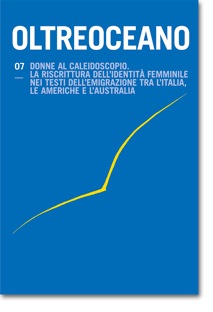La percezione visionaria e caleidoscopica di Marosa Di Giorgio. Un’empatia con Bosch e Arcimboldo
Keywords:
frontiere, linguaggio, ecfrasiAbstract
La percezione visionaria di Marosa di Giorgio Médicis (Salto, 1932 – Montevideo, 2004) elabora le ecfrasi di un caleidoscopio che ruotando produce infinite figure e intreccia significanti che mutano e rinascono continuamente. Gli orti e i frutteti di tenute agricole dai nomi italiani sono l’eden perturbante dove si declinano e si trasformano le frontiere dei corpi e della natura, sono lo spazio mentale dove il linguaggio scardina e ricompone proteiche forme umane, animali e vegetali.
Visionary and Kaleidoscopic Percception of Marosa di Giorgio’s Poetic Thought. An empathy with Bosch and Arcimboldo
Marosa di Giorgio’s (Salto, 1932 – Montevideo, 2004) elaborates the exphrasis of a kaleidoscope which in its rotating produces numberless figures and intertwines significants in continuous change and rebirth. Vegetable gardens and orchards carrying Italian names are the uncanny Eden where the frontiers of beings and of nature are transformed; they become the mental space where language deconstructs and reconstructs human, animal and vegetable protean figures.
Downloads
References
Bénitez Pezzolano, H. (2012): Mundo, tiempos y escritura en la poesía de Marosa di Giorgio. Montevideo: Estuario.
Bravo, L. (1997): Las nupcias exquisitas: Marosa di Giorgio y el collage onírico. Cuadernos de Marcha, 129, pp. 12-14.
Bussagli, M. (1995): Bosch. Firenze: Giunti.
Calvesi, M. F. (1987): Le fonti dell’Arcimboldi e il verde sogno di Polifilo. In J. Baltrušaitis, M. Calvesi & E. Coen (Eds.). Arcimboldi e l’arte delle meraviglie (pp. 38-51). Firenze: Giunti.
Carotenuto, A. (1997): Il fascino discreto dell’orrore. Psicologia dell’arte e della letteratura fantastica. Milano: Bompiani.
Carpeoro, G. F. [alias Gianfranco Pecoraro], (2016, 12 agosto): Arcimboldo, ovvero l’arte di scomporre e ricomporre. Ricuperato da https://carpeoro.wordpress.com/2016/08/12/arcimboldo-ovvero-dellarte-di-scomporre-e-ricomporre/
Deleuze, G. & Guattari, F. (1980): Mille plateaux: capitalisme et schizophrénie. Paris: Minuit.
Di Giorgio, M. (2010): No develarás el misterio. Entrevistas 1973-2004. Buenos Aires: el cuenco de plata.
Di Giorgio, M. (2000): Los papeles salvajes, I-II. Buenos Aires: Adriana Hidalgo.
Echavarren, R. (1992): Marosa di Giorgio, última poeta del Uruguay. Revista Iberoamericana, 160-161, pp. 1103-1115.
Espina, E.(2005, julio-octubre): Una mirada intencional (Medusa me dice, me seduce). Hermes Criollo, 9, pp. 92-98.
Garet, L. (2006): El milagro incesante. Vida y obra de Marosa di Giorgio. Montevideo: Aldebarán.
Porzio, F. (1987): Arcimboldi. Un imprevedibile erede di Leonardo. In J. Baltrušaitis, M. Calvesi & E. Coen (Eds.), Arcimboldi e l’arte delle meraviglie (pp. 23-37). Firenze: Giunti.
s.a. (2010): Un cordaje de la eternidad. Punto y coma, 2, 1982. In M. di Giorgio, No develarás el misterio. Entrevistas 1973-2004 (pp. 32-34). Buenos Aires: El cuenco de plata. Da rivedere
Downloads
Published
How to Cite
Issue
Section
License

This work is licensed under a Creative Commons Attribution-NonCommercial-ShareAlike 4.0 International License.
The authors undertake to comply with the following conditions, which are considered accepted at the time of submission of their contributions.
The sending of a text implies that it is unpublished and not submitted to be published elsewhere.
1. If accepted, the author shall confer on the publisher the right to publish and distribute it both in paper form and in the online electronic edition. The published articles will be downloadable and made available in open access.
2. Provided that it correctly indicates that the first publication took place in the journal Oltreoceano. Rivista sulle migrazioni the author has the right to: a) reproduce the article in separate extracts or collected in a volume; b) publish the article on their personal website or teaching site provided that these sites are of a non-commercial nature; c) deposit the article in online archives of a non-commercial nature, linked to the institution they belong to or as part of projects for the non-commercial dissemination and open access of scientific works.
The use of contributions by third parties, for commercial or otherwise unauthorized purposes, is not allowed. The publisher declines all responsibility for the unauthorized use of the material published in the journal.












